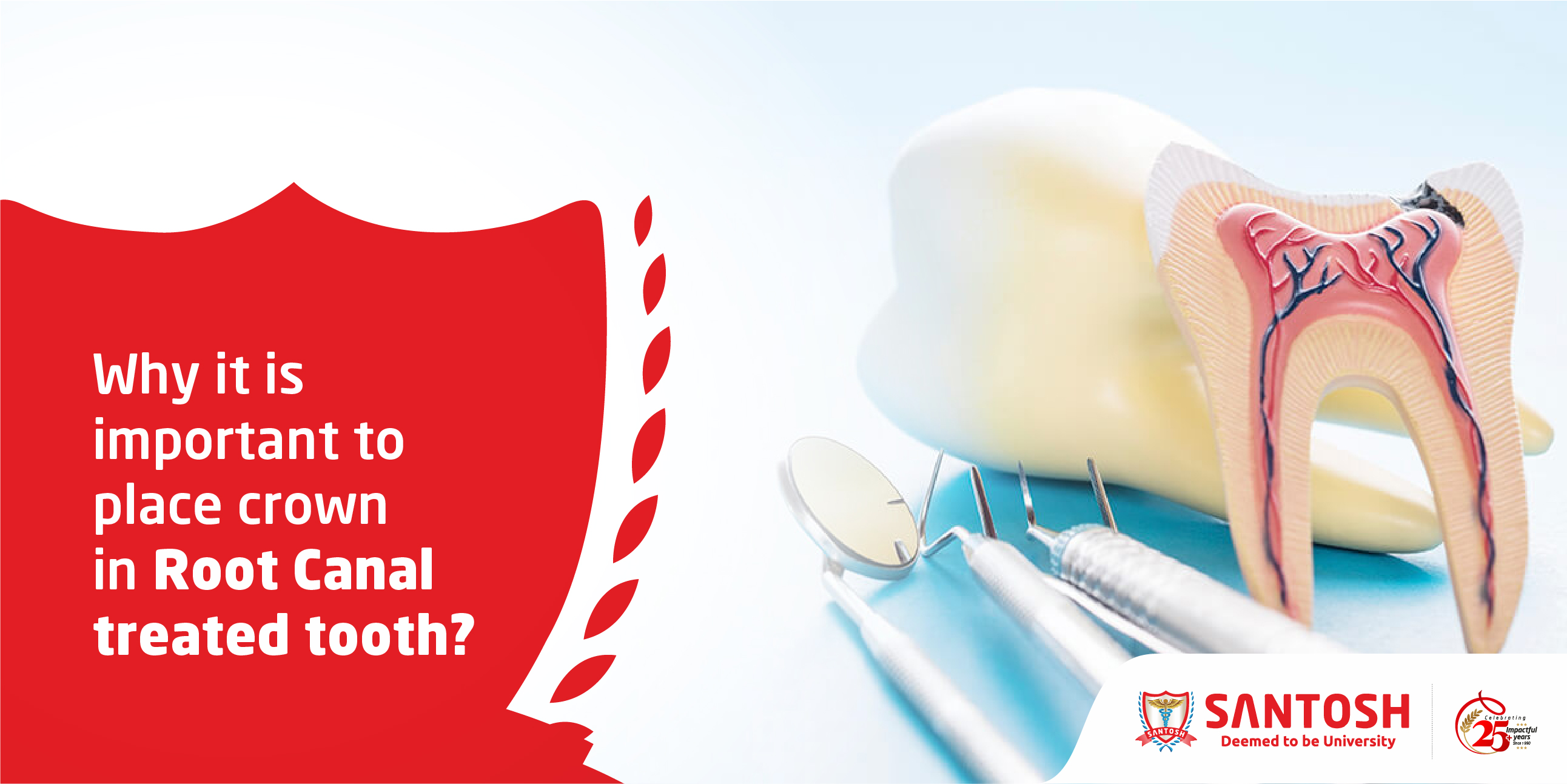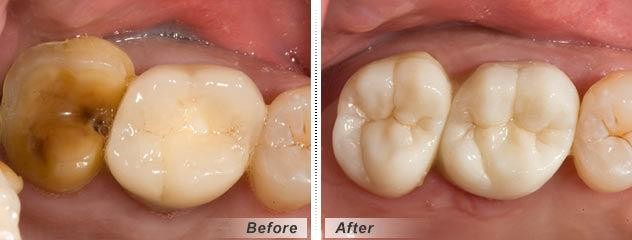
Root canal treatment is an extremely common procedure in dentistry. It is performed when the infection has reached up to the pulp which is present in the centre of the tooth. Exposure of the pulp due to dental caries or trauma can cause the pulp to get infected due to the ingress of oral microorganisms into it. These microorganisms slowly break down the internal environment including the blood vessels and nerves and lead to the production of pus. This pus formation further extends beyond the root of the tooth and destroys the bone below the tooth. The most important reason is after root canal treatment, the natural environment of the tooth is disrupted making it dry and weak. It becomes brittle and can break easily on putting even a small amount of force. The tooth can break in such a way that re-root canal treatment has to be done and in some cases, the tooth has to be extracted. Another most common reason to place a crown after root canal treatment is the chance of re-infection.
There are different types of crowns including complete metal, Porcelain Fused to Metal, Ceramic, and Zirconia crowns. Metal crowns are high in strength but lack aesthetics and give a metal look to the tooth due to which they are discouraged by the patients to be put in their mouth. Porcelain fused to metal (PFM) crowns has a base layer of metal with a tooth-colored layer on top.
They are aesthetic as they have an upper tooth-colored layer but have a disadvantage that this top layer can get fractured by lateral forces exposing the underlying metal layer because it has to be replaced. Also, the color matching to the natural tooth is of comparatively inferior quality. Ceramic and Zirconia crown a complete tooth-colored overcoming the disadvantage of PFM Crowns. They are highly aesthetic with superior color matching to natural teeth. Zirconia crowns also have high strength along with superior aesthetics making them the dentist’s choice for the ideal crown to be placed inside the mouth.
For More Info Visit: https://www.santosh.ac.in/
